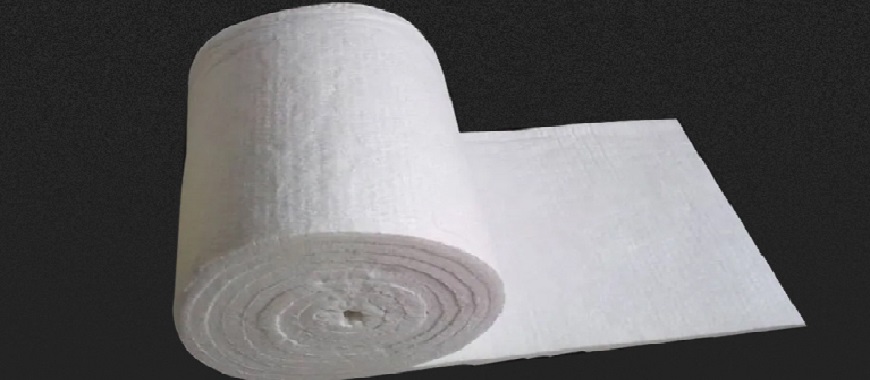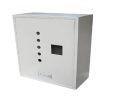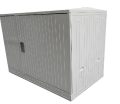
Fiberglass is a composite material made from fine glass fibers and resin, widely utilized across numerous industries due to its exceptional strength, lightweight nature, and resistance to environmental factors. Understanding the fibreglass melting point is crucial, as it determines the temperature at which the material begins to lose its structural integrity and transition into a liquid state. This property is particularly relevant in industrial contexts, where fiberglass is employed in applications such as automotive components, construction materials, and insulation. Knowledge of the melting point helps engineers and manufacturers select appropriate fiberglass products for high-temperature environments, ensuring both safety and performance. The typical melting point of fiberglass is around 1,000 to 1,200 degrees Fahrenheit (538 to 649 degrees Celsius), making it suitable for a range of demanding applications.
Fibreglass Melting Point and Fiberglass Melting Point in Celsius
Melting Point Of Glass Fiber
The fibreglass melting point typically ranges from approximately 538 to 649 degrees Celsius (1,000 to 1,200 degrees Fahrenheit). This melting point can vary slightly depending on the specific type of fiberglass and the resin used in its composition. For instance, E-glass, which is one of the most commonly used types, usually maintains a melting point around 800 to 1,000 degrees Celsius.
Understanding the melting point is crucial for several reasons in manufacturing and application processes. First, it ensures that fiberglass products can withstand the heat generated in various environments, especially in automotive and aerospace applications where temperatures can fluctuate significantly. Second, knowing the melting point aids in the proper selection of fiberglass for insulation materials, where thermal resistance is vital for energy efficiency and safety. Lastly, manufacturers must consider the melting point during production to avoid compromising the structural integrity of the fiberglass during processing, ensuring that the end product meets safety and performance standards.
Fibreglass Telescopic Mast Kits for Easy Setup
Fibreglass Melting Point and Glass Fiber vs. Fiberglass
Glass fiber and fiberglass are often used interchangeably, but they refer to distinct concepts in materials science. Glass fiber refers specifically to the individual strands of glass that are produced during the manufacturing process. These strands are incredibly fine and are typically woven into fabrics or used as reinforcement in various composites. In contrast, fiberglass is a composite material made by combining glass fibers with a resin matrix. This combination enhances the overall strength and durability of the product, making fiberglass suitable for a wide range of applications.
Comparison Table
| Property | Glass Fiber | Fiberglass |
|---|---|---|
| Definition | Individual strands of glass | Composite material of glass fibers and resin |
| Fibreglass Melting Point | Higher melting point (typically around 800–1,000°C) | Lower melting point (ranges from 538 to 649°C) |
| Mechanical Properties | High tensile strength; flexible | High strength-to-weight ratio; durable |
| Typical Uses | Electrical insulation, reinforcing materials | Boats, automotive parts, insulation, construction materials |
The fibreglass melting point is a key differentiator between the two materials. While glass fibers can withstand higher temperatures due to their composition, fiberglass’s melting point indicates its thermal limitations when used in specific applications. Understanding these differences is crucial for selecting the right material for a given project, especially in industries that demand high-performance materials like aerospace, automotive, and construction.
Fibreglass Melting Point and Glass Fiber Uses
Glass fiber is a versatile material widely employed across various industries due to its unique properties, including strength, lightweight nature, and corrosion resistance. Here are some common applications of glass fiber:
Automotive Industry:
Glass fiber is used in manufacturing components such as body panels, hoods, and underbody shields. Its lightweight nature helps improve fuel efficiency while maintaining structural integrity and safety.
Construction:
In the construction sector, glass fiber is often utilized in the production of fibreglass composite panels, roofing materials, and insulation products. Its durability and resistance to moisture make it ideal for various building applications, including insulation in walls and roofs.
Aerospace:
Glass fiber is crucial in aerospace applications, where it is used in making lightweight and durable components. Its high strength-to-weight ratio is essential for improving fuel efficiency and reducing the overall weight of aircraft.
Marine Applications:
Glass fiber is extensively used in boat manufacturing, particularly for hulls and decks. The material’s resistance to water and corrosion ensures longevity and reliability in marine environments.
Electrical Insulation:
Due to its excellent insulating properties, glass fiber is used in electrical components, including insulators, circuit boards, and wiring harnesses, where it can withstand high temperatures.
The fibreglass melting point plays a significant role in determining the usability of glass fiber in high-temperature environments. For instance, while glass fiber can endure temperatures up to about 800–1,000°C, fiberglass composites have lower melting points ranging from 538 to 649°C. This difference means that glass fiber components are often preferable in applications that require high-temperature resistance, whereas fiberglass may be limited to moderate thermal environments. Understanding the melting point is essential for ensuring the reliability and safety of glass fiber products in their intended applications.
Essential Benefits of Fibreglass Roof Profiles for Homes
Fibreglass Melting Point and Glass Fiber Density in kg/m³
Density Of Glass Fiber
The density of glass fiber is a crucial factor that significantly influences its performance characteristics, particularly its strength-to-weight ratio. Typically, the density of glass fiber ranges from 2,500 kg/m³ to 2,700 kg/m³. This relatively low density allows glass fiber to maintain a high level of strength while remaining lightweight, making it an ideal material for applications in industries such as aerospace, automotive, and construction.
A key advantage of this low density is its contribution to the overall efficiency of structures. For example, in the automotive sector, using glass fiber in body panels and components results in vehicles that are lighter yet possess the same or improved structural integrity compared to traditional materials. This leads to better fuel efficiency and enhanced performance.
The relationship between density of fiberglass and its fibreglass melting point is also noteworthy. Generally, materials with lower density tend to have lower melting points. For instance, glass fibers can withstand higher temperatures (up to about 800–1,000°C) compared to fiberglass composites, which typically melt at lower temperatures ranging from 538 to 649°C. Understanding this relationship is essential for selecting the right material for specific applications, particularly in environments where high temperatures are a concern.
By considering both the density and melting point, manufacturers can optimize their products for strength, thermal resistance, and overall durability, ensuring that glass fiber materials perform effectively in various demanding applications.
Fibreglass Melting Point and Glass Fiber Properties
Glass fiber is renowned for its exceptional properties, which make it a popular choice in a variety of industries. Some of the key properties of fiberglass include:
Tensile Strength:
Glass fiber exhibits high tensile strength, typically exceeding that of many metals. This characteristic allows structures made from glass fiber to withstand significant stress without deformation or failure. The tensile strength can vary depending on the type of glass fiber, with E-glass fibers generally offering a tensile strength of about 2000 MPa or higher.
Flexibility:
Although strong, glass fiber also demonstrates a degree of flexibility, making it easier to work with in various applications. This flexibility allows it to conform to different shapes, making it ideal for use in molds and intricate designs.
Thermal Resistance:
Glass fiber possesses excellent thermal resistance properties, allowing it to maintain structural integrity in high-temperature environments. The fibreglass melting point is a crucial factor here, as it typically ranges from 538 to 649°C (approximately 1,000 to 1,200°F). This means that glass fiber can be used in applications where high heat exposure is common, such as in insulation for furnaces or engine components.
The correlation between these properties and the fiberglass melting point is significant. For instance, as the melting point increases, the thermal resistance improves, allowing glass fiber to perform effectively in environments with elevated temperatures. Additionally, the high tensile strength ensures that even at high temperatures, the material maintains its structural integrity, which is critical in applications like aerospace, automotive, and industrial sectors.
Understanding the properties of glass fiber and their relationship with the fibreglass melting point is essential for selecting the appropriate materials for specific applications, particularly when heat resistance and strength are paramount. By leveraging these properties, manufacturers can create products that not only meet safety standards but also enhance performance and longevity.
Top Reasons to Choose a Fibreglass Bay Window Roof
Fibreglass Melting Point and Glass Fiber Products
Glass fiber is a versatile material that is widely used in various products across multiple industries due to its advantageous properties. Some notable examples of products made from glass fiber include:
Insulation Materials:
One of the most common applications of glass fiber is in thermal insulation. Glass fiber insulation batts and blankets, along with other types of fiberglass insulation like spray-applied and rigid fiberglass boards, are used extensively in residential and commercial buildings to enhance energy efficiency. These insulation products benefit from the low thermal conductivity of glass fiber, allowing them to maintain their insulating properties even at elevated temperatures. The fibreglass melting point plays a crucial role here, as insulation materials must withstand high heat without compromising their structural integrity.
Automotive Parts:
Glass fiber is often used in the automotive industry for making lightweight and durable components such as body panels, hoods, and chassis parts. The high tensile strength and flexibility of glass fiber allow for the creation of parts that are both strong and lightweight, improving vehicle performance and fuel efficiency. The ability of glass fiber to endure high temperatures, as indicated by its fibreglass melting point, makes it suitable for parts that may be exposed to heat from the engine or exhaust systems.
Construction Materials:
In the construction sector, glass fiber is used in various applications such as roofing, siding, and reinforcement materials. Products like fiberglass-reinforced plastic (FRP) sheets are employed for their strength, durability, and resistance to environmental factors. The fibreglass melting point ensures that these materials can withstand the heat from direct sunlight and other thermal stresses, making them ideal for long-lasting construction solutions.
Building upon this, the selection of glass fiber products for specific applications depends heavily on their melting point and thermal resistance. For instance, insulation products need to maintain performance in high-temperature environments, while automotive and construction materials require both strength and the ability to withstand extreme conditions. Understanding the fiberglass melting point helps manufacturers design products that not only meet industry standards but also perform reliably under challenging circumstances. In particular, fiberglass sheets are critical in this context, as fiberglass sheet melting point directly impacts their suitability for construction applications. These sheets typically possess a high melting point, allowing them to endure significant temperature fluctuations on construction sites, ensuring structural stability and longevity.
The diverse range of products made from glass fiber highlights its importance in modern applications, and the relationship between the melting point and product performance is critical for ensuring effectiveness in various environments.
Fibreglass Melting Point and E-Glass Fiber: What are Their Properties
E-glass fiber, a widely used type of glass fiber, is known for its excellent mechanical properties and cost-effectiveness. E-glass, short for “electrical glass,” was originally developed for electrical applications due to its favorable insulating properties. It is composed mainly of silica and other oxides, which provide a combination of strength and flexibility, making it suitable for various industrial applications.
Specific Properties of E-Glass Fiber
One of the key characteristics of E-glass fiber is its fibreglass melting point, which typically ranges between 540°C and 600°C (approximately 1,000°F to 1,112°F). This high melting point is essential for applications that require materials to withstand elevated temperatures without losing structural integrity. The melting point, along with its tensile strength and electrical insulating capabilities, makes E-glass fiber a reliable choice for many sectors.
E-glass fiber is known for its:
- High tensile strength: It provides excellent resistance to tension, making it ideal for reinforcing various materials.
- Good thermal stability: While it maintains strength at high temperatures, its fibreglass melting point ensures that it remains effective in applications exposed to heat.
- Electrical insulation: E-glass fibers are non-conductive, making them perfect for electrical components, such as circuit boards and insulation for wiring.
Comparison with Other Types of Glass Fiber
When comparing E-glass fiber with other types of glass fibers, such as S-glass (strength glass), there are notable differences in terms of applications and performance:
- S-Glass Fiber: S-glass is designed for applications requiring even higher strength and temperature resistance. Its fibreglass melting point is slightly higher than that of E-glass, making it suitable for aerospace and military applications where performance under extreme conditions is critical. S-glass fibers can withstand greater loads and offer better tensile strength than E-glass.
- Applications: E-glass is commonly used in the automotive industry, construction, and various consumer products due to its affordability and versatility. In contrast, S-glass is utilized primarily in high-performance applications, such as aerospace components and advanced sporting equipment, where superior strength and durability are required.
E-glass fiber is a vital component in numerous industries, combining cost-effectiveness with impressive mechanical properties. Understanding the fibreglass melting point and its implications on performance allows manufacturers and engineers to select the appropriate type of glass fiber for their specific applications, whether they need the general robustness of E-glass or the superior strength of S-glass.
Fibreglass Melting Point and Glass Fiber Material
Glass fiber material is a composite substance made from fine strands of glass that are woven or bonded together to create a durable and versatile product. The composition of glass fiber materials plays a crucial role in determining their properties, including strength, flexibility, and thermal resistance.
Composition of Glass Fiber Materials
The primary component of glass fiber is silica, which forms the glass matrix. In addition to silica, various oxides are added to enhance specific properties:
- Alumina (Al2O3): Improves the glass’s chemical durability and thermal stability.
- Calcium Oxide (CaO): Increases workability and lowers the melting temperature, making it easier to process.
- Boron Oxide (B2O3): Enhances electrical insulation properties and contributes to the glass’s overall strength.
The specific formulation can vary based on the intended application, leading to different types of glass fibers, such as E-glass, S-glass, and C-glass. Each type has unique characteristics that make it suitable for specific uses.
How Composition Affects the Fibreglass Melting Point
The fibreglass melting point is significantly influenced by the materials used in its composition. For instance, E-glass fiber typically has a melting point ranging from 540°C to 600°C (approximately 1,000°F to 1,112°F). This high melting point is essential for applications that encounter elevated temperatures, ensuring the glass fiber maintains its integrity and strength.
In contrast, adding boron oxide to the composition can lower the melting point slightly, which may be beneficial for certain applications where easier processing is required but might compromise performance at high temperatures.
- Thermal Properties: The thermal properties of glass fiber materials are critical in applications requiring insulation against heat. The materials used not only determine the fibreglass melting point but also influence thermal conductivity and resistance to thermal shock. A well-designed glass fiber material can effectively withstand rapid temperature changes without degrading.
- Impact on Performance: Understanding the composition of glass fiber materials is vital for manufacturers and engineers. Selecting the appropriate type of glass fiber based on its melting point and thermal characteristics can optimize performance in various applications, from construction to automotive parts and insulation products.
The composition of glass fiber materials significantly impacts their melting point and thermal properties. Knowledge of these factors is essential for leveraging the advantages of glass fiber in high-temperature environments and ensuring its suitability for diverse applications.
FAQs about Fibreglass Melting Point
The melting point of fiberglass varies depending on its specific type and composition. Generally, E-glass fiber, one of the most common types of fiberglass, has a melting point ranging from approximately 540°C to 600°C (1,000°F to 1,112°F). This high melting point makes fiberglass suitable for various applications, especially those exposed to elevated temperatures, such as insulation and structural components in industrial settings.
Fiberglass can typically withstand temperatures up to around 500°F (260°C) without significant degradation. However, its performance can vary based on the specific resin used in conjunction with the fiberglass. Some specialized fiberglass products are engineered to endure even higher temperatures, making them suitable for high-heat environments, such as automotive exhaust systems and industrial furnaces.
Yes, fiberglass is known for its excellent heat resistance. It is designed to maintain its structural integrity and mechanical properties even at elevated temperatures. The heat resistance of fiberglass is one of its key advantages, making it a preferred material in industries that require thermal insulation and fire protection.
When fiberglass is heated beyond its melting point, it begins to lose its structural integrity. Initially, fiberglass may soften and become more pliable; however, as the temperature continues to rise, it will eventually melt and lose its shape. If exposed to extreme heat, the resin used in fiberglass can also begin to decompose, which may lead to the release of hazardous fumes. Therefore, it’s crucial to adhere to recommended temperature limits to ensure the material’s safety and effectiveness in its intended applications.

As the editor of GangLong Fiberglass, I have years of experience and in-depth research, focusing on cable tray products, fiberglass solutions, and grille systems. I incorporate years of industry insights and practical experience into every content, committed to promoting the progress of the industry. At GangLong Fiberglass, my commitment is reflected in every product, from innovative cable trays to durable fiberglass solutions and sturdy grille systems. As an authoritative voice in the industry, my goal is to provide valuable information to professionals and businesses and promote forward-looking solutions.


